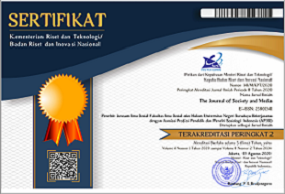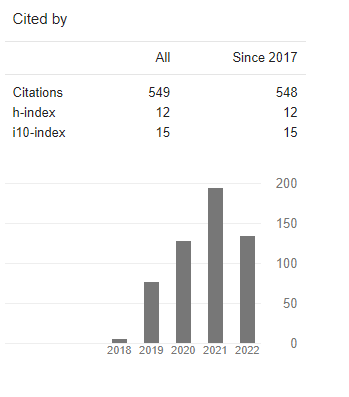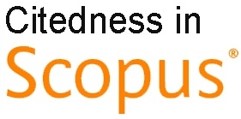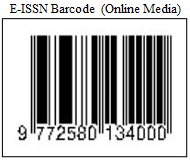Deconstruction of Communication Structures in the Digital Age: Public Hysteria and Government Panopticon
DOI:
https://doi.org/10.26740/jsm.v8n1.p1-23Kata Kunci:
deconstruction, communication structures, digital age, pandemictalks, community hysteriaAbstrak
Era digital dan pandemi memberikan dampak besar pada struktur komunikasi. Penelitian ini berupaya mengungkap makna tersembunyi dibalik metanarasi pandemi yang ada di Indonesia. Tidak hanya mengungkap sebuah fenomena, tapi juga membongkar kepentingan pemerintah dibalik fenomena pandemi dan digitalisasi proses komunikasi. “Dekonstruksi” dijadikan kerangka pemikiran dan kerangka kerja pendekatan kualitatif dengan metode deskriptif-kritis. Hasil penelitian menunjukkan bahwa pandemi telah mendeterminasi cara interaksi, komunikasi, hingga eksistensi masyarakat. Pandemi juga memunculkan berbagai persoalan sosial yang besar, yaitu munculnya histeria massal. Pandemi juga melahirkan patologi sosial baru yang disebut sebagai pandemi informasi yang melahirkan imaji teror ditandai dengan rasa takut, frustasi, dan stress. Dalam mengendalikan fenomena ini pemerintah mengambil peran dengan menerapkan panopticon yang memunculkan kekerasan simbolik. Strategi teknik kuasa yang bersifat lembut dan impresif. Berbagai wacana dilakukan dalam bentuk aturan dan simbol-simbol yang merepresentasikan penerapan strategi kekuasaan.
Referensi
Ali Homaid, A. (2022). Problematic social media use and associated consequences on academic performance decrement during COVID-19. Addictive Behaviors, 132(May), 107370. https://doi.org/10.1016/j.addbeh.2022.107370
Aziz, G. P. (2018). Dekonstruksi. Resume.
Buschhardt, T., et al. (2021). A one health glossary to support communication and information exchange between the human health, animal health and food safety sectors. One Health, 13(February). https://doi.org/10.1016/j.onehlt.2021.100263
Cascini, F., Pantovic, A., Al-Ajlouni, Y. A., Failla, G., Puleo, V., Melnyk, A., Lontano, A., & Ricciardi, W. (2022). Social media and attitudes towards a COVID-19 vaccination: A systematic review of the literature. EClinicalMedicine, 00, 101454. https://doi.org/10.1016/j.eclinm.2022.101454
Cullen, S. (2006). Specters of Marx - The state of the debt, the work of mourning and the new international. Routledge.
Derrida, J. (1991). OF SPIRIT Heidegger an the Question. The university of chicago press.
Dilawar, S., Liang, G., Zubair, M., Zaib, A., Shahani, R., & Kous, M. (2022). Acta Psychologica Interpreting the impact of extraversion and neuroticism on social media addiction among university students of Pakistan : A mediated and moderated model. Acta Psychologica, 230(October), 103764. https://doi.org/10.1016/j.actpsy.2022.103764
Eismann, K., Posegga, O., & Fischbach, K. (2021). Opening organizational learning in crisis management: On the affordances of social media. Journal of Strategic Information Systems, 30(4), 101692. https://doi.org/10.1016/j.jsis.2021.101692
Foucault, M. (1981). MICHEL FOUCAULT The Henneneutics ef the Subject (F. Gros (ed.)). palgrave macmillan.
Foucault, M. (2006). History of Madness (J. Khalfa (ed.)). Routledge, taylor & francis Group.
Garcia-Retamero, R., & Galesic, M. (2018). Transparent communication of health risks: Overcoming cultural differences. In Springer. Springer International Publishing. https://doi.org/10.1007/9781461443582
Ghai, S., Magis-Weinberg, L., Stoilova, M., Livingstone, S., & Orben, A. (2022). Social media and adolescent well-being in the Global South. Current Opinion in Psychology, 46, 101318. https://doi.org/10.1016/j.copsyc.2022.101318
Harrington, N. G. (2014). Health communication: An introduction to theory, method, and application "Theory, Method, and Application. In Rotledge. Routledge. https://doi.org/10.4324/9780203366820-10
Hogeveen, H., & Lam, T. J. G. . (2011). Udder Health and Communication. In Waginingen academic publisher (Vol. 59).
Islam, S. M., & Habib, A. (2022). Journal of Business Venturing Insights How impact investing firms are responding to sustain and grow social economy enterprises in light of the COVID-19 pandemic. Journal of Business Venturing Insights, 18(October), e00347. https://doi.org/10.1016/j.jbvi.2022.e00347
Lara, R. S., & Bokoch, R. (2021). Cognitive functioning and social media: Has technology changed us? Acta Psychologica, 221(September), 103429. https://doi.org/10.1016/j.actpsy.2021.103429
Lee, D. S., & Way, B. M. (2021). Social media use and systemic inflammation: The moderating role of self-esteem. Brain, Behavior, & Immunity - Health, 16(July), 100300. https://doi.org/10.1016/j.bbih.2021.100300
Lefebvre, R. C., Chandler, R. K., Helme, D. W., Kerner, R., Mann, S., Stein, M. D., Reynolds, J., Slater, M. D., Anakaraonye, A. R., Beard, D., Burrus, O., Frkovich, J., Hedrick, H., Lewis, N., & Rodgers, E. (2020). Health communication campaigns to drive demand for evidence-based practices and reduce stigma in the HEALing communities study. Drug and Alcohol Dependence, 217, 108338. https://doi.org/10.1016/j.drugalcdep.2020.108338
Mahmoud, M., Abdelkader, M., & Sadek, S. (2022). Architectural education challenges and opportunities in a post-pandemic digital age. Ain Shams Engineering Journal, xxxx, 102027. https://doi.org/10.1016/j.asej.2022.102027
Massey, P. M., Togo, E., Chiang, S. C., Klassen, A. C., Rose, M., Manganello, J. A., & Leader, A. E. (2021). Identifying HPV vaccine narrative communication needs among parents on social media. Preventive Medicine Reports, 23, 101488. https://doi.org/10.1016/j.pmedr.2021.101488
Muniem Abdel Fattah, F. A., Al Halbusi, H., & Al-Brwani, R. M. (2022). Influence of Self-Perceived Creativity and Social Media Use in Predicting E-Entrepreneurial Intention. International Journal of Innovation Studies. https://doi.org/10.1016/j.ijis.2022.04.003
Pergamon, T. E. R. M., & Systems, I. (2013). The Evolution of Human Communication and the Informat ion Revolution- A Mat hemat ical Perspective Department of Information Systems. Communication.
Phillips, W. J., & Wisniewski, A. T. (2021). Self-compassion moderates the predictive effects of social media use profiles on depression and anxiety. Computers in Human Behavior Reports, 4, 100128. https://doi.org/10.1016/j.chbr.2021.100128
Prasad, A., Armada, F., Kimura, Y., Radnaabazar, Y., & Byambajav, K. (2014). Communicating for action: Tackling health inequity in Urban Areas. In Springer. Springer International Publishing. https://doi.org/10.1007/978-1-4614-9335-8_10
Shellanabilla, C., Ismail, A., Pramesthi, A. A., Muhadzib, M. A., Werdani, K. E., Arifah, I., Wijayanti, A. C., Kusumawati, Y., Junaedi, F., Darmawan, E. S., Jati, S. P., Taki, S., & Suswardany, D. L. (2022). Content Analysis of Risk Communication on Three Instagram Accounts of Provincial Health Offices in Indonesia During the Covid-19 Pandemic. International Journal of Infectious Diseases, 116, S115. https://doi.org/10.1016/j.ijid.2021.12.272
Smith, J., Davies, S. E., Gr, K. A., Harman, S., Herten-crabb, A., Murage, A., Morgan, R., & Wenham, C. (2022). Social Science & Medicine Reconceptualizing successful pandemic preparedness and response : A feminist perspective. Social Science & Medicine, 315(October). https://doi.org/10.1016/j.socscimed.2022.115511
Xu, W., & Taghizadeh Larsson, A. (2021). Communication officers in local authorities meeting social media: On the production of social media photos of older adults. Journal of Aging Studies, 58(June), 100952. https://doi.org/10.1016/j.jaging.2021.100952
Yao, L., & Ngai, C. S. B. (2022). Engaging social media users with attitudinal messages during health crisis communication. Lingua, 268, 103199. https://doi.org/10.1016/j.lingua.2021.103199
Zhao, L. (2021). The impact of social media use types and social media addiction on subjective well-being of college students: A comparative analysis of addicted and non-addicted students. Computers in Human Behavior Reports, 4, 100122. https://doi.org/10.1016/j.chbr.2021.100122
Unduhan
Diterbitkan
Cara Mengutip
Terbitan
Bagian
Lisensi
Hak Cipta (c) 2024 The Journal of Society and Media

Artikel ini berlisensi Creative Commons Attribution 4.0 International License.
 Abstract views: 546
,
Abstract views: 546
, PDF Downloads: 450
PDF Downloads: 450












